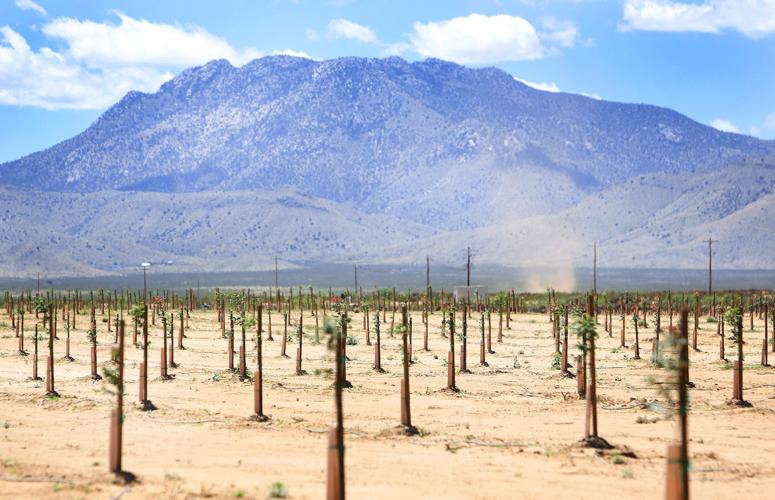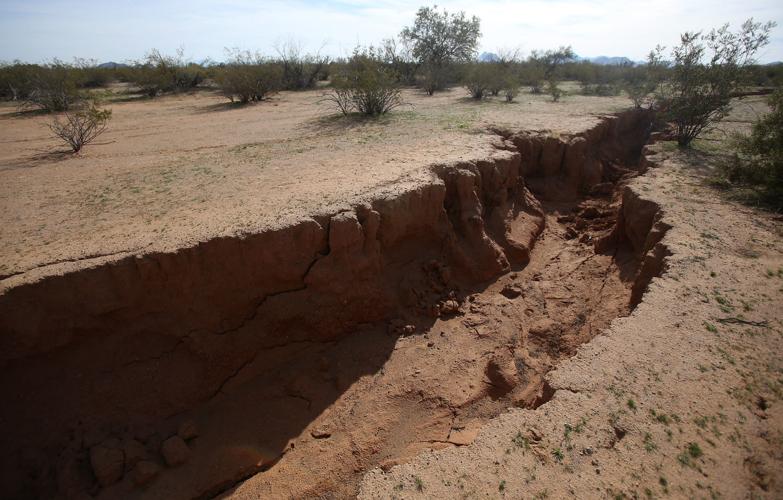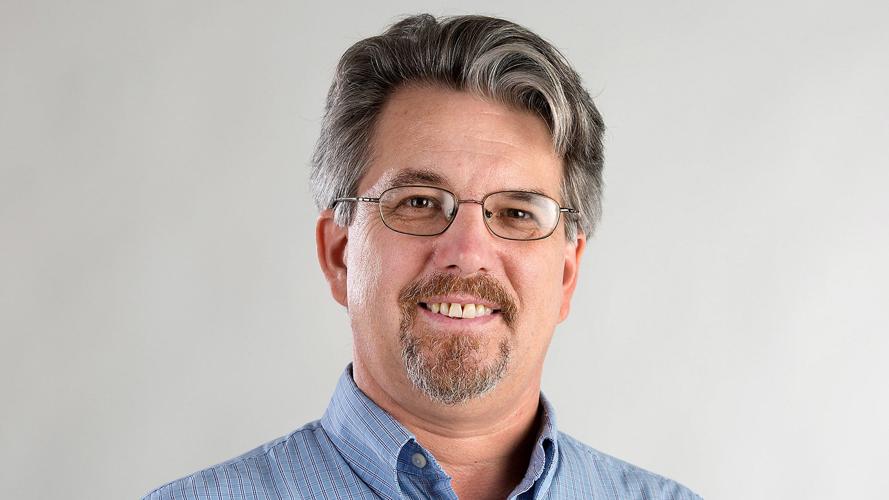In January last year, a palpable sense of urgency pushed the governor, legislative leaders and interest groups to complete a drought contingency plan just ahead of a federal deadline.
That effort forestalled disaster on the Colorado River, and the governor continues to hail it as a big accomplishment.
But there’s no deadline, no immediate threat, forcing Arizona to confront a similar emergency in several parts of the state — the unregulated over-pumping and depletion of groundwater.
Investors and agribusinesses from around this and other countries have rushed in to exploit Arizona’s lax water laws in places like Mohave and Cochise counties. Groundwater levels are dropping fast in some areas.
Yet powerful interests have stymied several landmark legislative efforts this session to start getting a handle on over-pumping and depletion.
The key committee chairs in the state House and Senate won’t even hold a vote on any of the bills. And neither the Senate president nor the House speaker, nor the governor seem to be twisting any arms to make progress on this, Arizona’s other water emergency.
Among several important bills Republicans and Democrats have introduced on the issue this session:
- HB 2896 would allow counties to establish rural management areas in basins showing signs of over-pumping.
- HB 2895 would make it easier for the Arizona Department of Water Resources to create new Irrigation Non-expansion Areas — places where only existing irrigation would be allowed.
- HB 2158 would require metering of all wells except those that pump less than 35 gallons per minute — requiring large irrigation operations to measure their groundwater withdrawals for the first time.
- HB 2159 would require rural counties to ensure there is an adequate, 100-year water supply before approving new subdivisions.
This isn’t a new issue. It’s been sneaking up on us for decades, since the signing of the 1980 Groundwater Management Act. That act regulated water in Arizona’s urban areas, as well as Pinal and Santa Cruz counties, as Active Management Areas, but it left most rural areas unregulated.
By and large, local people have liked it that way. But in the last decade, as big money has aggressively sought cheap water, regular people and smaller farmers in many areas have been squeezed. They have to dig ever-deeper wells to reach the groundwater, something that eventually only big-money operations can afford.
Who’s stopping the bills? In the House, the chair of the Natural Resources, Energy and Water Committee is Rep. Gail Griffin of Sierra Vista and in the Senate the chair of the relevant committee is Sen. Sine Kerr.
As committee chairs, they have the power to hear bills and hold votes or simply choose not to hear them. They’ve chosen not to hold votes, though each chamber held “informational” hearings on specific water bills.
The main interest group pushing the relevant legislators is agriculture, a relatively small industry in Arizona that wields outsized power. Another interest likely holding back progress on groundwater is rural landowners who don’t want the value of their property as potential future farmland or subdivisions to be stunted by limits on irrigation or development.
Dubiously, the Arizona Farm Bureau insists that new farming companies massively exploiting lax groundwater regulations should be viewed the same as longtime Arizona farmers. At an informational hearing in the Senate on Feb. 20, Chelsea McGuire of the Farm Bureau said:
“As a representative of an organization that represents all of Arizona agriculture, regardless of location, regardless of size, regardless of commodity, it’s really difficult for us to hear this distinction being made between good farmers and bad farmers. These bad out-of-state farmers — well, they’re farming in Arizona now. They’re Arizona farmers. They’re contributing to our tax base. They’re employing people. They’re having a positive economic and social impact.”
When I spoke with her Friday, the president of the Arizona Farm Bureau, Tucson-area farmer-rancher Stefanie Smallhouse, doubled down on this idea.
“There is no difference between a large farmer and a small farmer,” she said. “They’re still using water to produce food.”
She said the Farm Bureau’s main objection is that legislators are rushing to make laws that could have unintended consequences on agriculture, when instead people should let existing efforts play out, especially localized efforts to resolve local problems. The Governor’s Water Augmentation Council, for example, is pressing forward to build consensus on these issues, she said.
“All of these issues are being presented as if we’re going to run out of water tomorrow,” Smallhouse said. “We have time to deliberate.”
It doesn’t feel that way in Mohave County. Kingman and county officials have pushed to have the Hualapai Basin deemed an Irrigation Non-expansion Area, but were denied because state law doesn’t allow water officials to consider future pumping in making the designation. Existing bills would fix this problem, something local officials desperately want.
“The Hualapai Basin is at risk right now and is looking at less than 50 years of assured water,” said Rep. Regina Cobb, a Kingman Republican who has pushed for improved groundwater regulation.
Democrats Rep. Kirsten Engel of Tucson and Sen. Lisa Otondo, who grew up in a Yuma County farm family, noted many of these proposals have been waiting for action for years.
The Arizona Department of Water Resources, for example, requested the ability to estimate future water use in deciding whether to approve an Irrigation Non-expansion Area in 2017.
Now, thanks to the opposition of big ag, the department says it is “neutral” on proposals that it asked for three years ago. This is unacceptable weakness.
Otondo, a Democrat, bristled during the Feb. 20 hearing at the idea that a Saudi Arabian-owned hay farm is comparable to Arizona farming families like hers. And she noted that some of the concepts enshrined in this year’s bills have been kicking around for five to 10 years and are needed now.
“In areas like Mohave, their groundwater is dropping rapidly, rapidly. Yet the tools aren’t available to protect the farmers, the cities and the people who live there. That I find very disturbing, and it’s not only happening in that neck of the woods.”
It’s not a partisan issue — Republican legislators like Cobb of Kingman and Rep. John Kavanagh of Fountain Hills have been among the most outspoken proponents of these bills.
Kavanagh, who authored a bill that would allow the Water Resources Department to order measuring of groundwater pumping in threatened areas, was frustrated by the inaction.
“I think we’re kicking the can down the road, and we’re going to have a real crisis eventually,” Kavanagh told The Arizona Republic. “I guess we’ll just have to wait until a fissure splits the I-10 between Phoenix and Tucson to move people to start taking a closer look.”
But one interest group with sway over a few key legislators is preventing these first-step measures from even getting a vote.
I asked representatives of the governor’s office what’s stopping them from banging heads to get action like they did last year.
“We are taking the lessons learned from the Drought Contingency Plan process,” spokesman Patrick Ptak said. “The lesson we took away from DCP was we can have success and a generational accomplishment when we have everybody at the table with all the stakeholders in the room.”
Then they should do that now, urgently, while the Legislature is still in session. This generation’s accomplishment on groundwater is ready to be achieved, if someone with power —like the governor, speaker or majority leader — would only use it.






